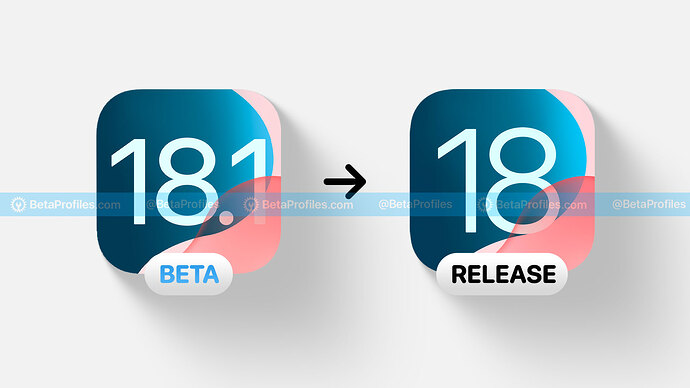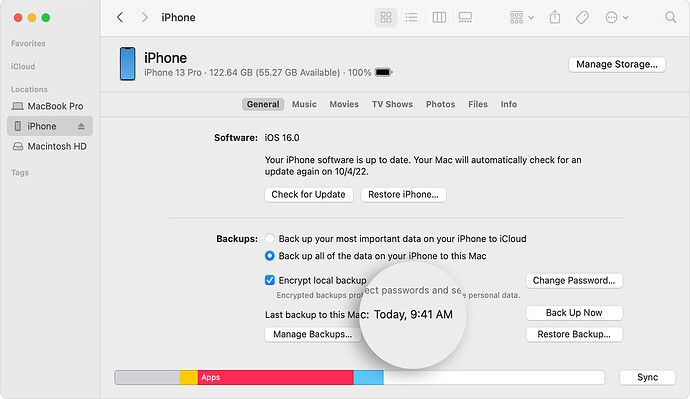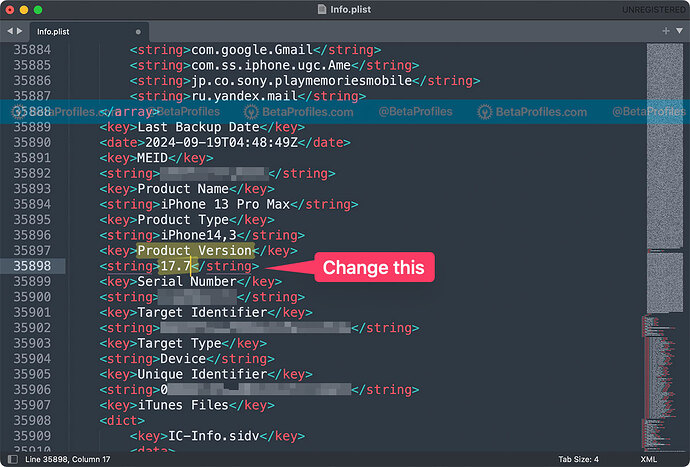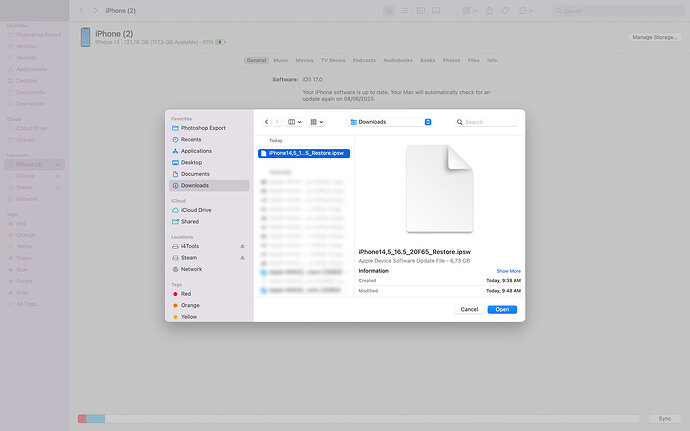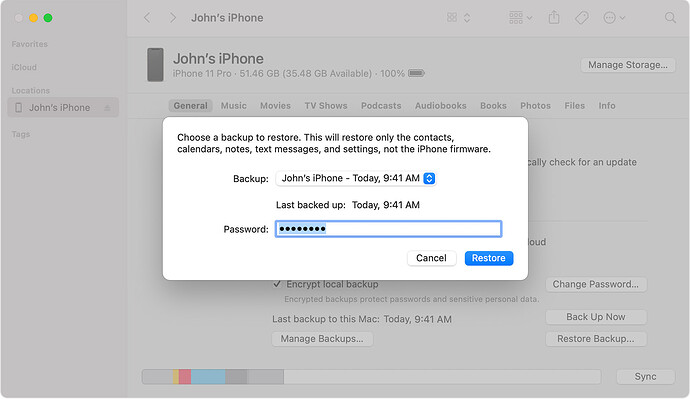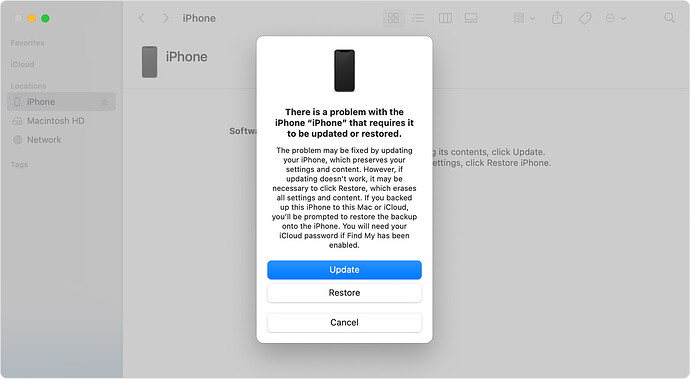I guess you’ve downloaded and installed iOS 18.1 beta on your device in the past few days, right? Although iOS 18.1 brings some exciting features but some devices may encounter issues such as overheating, battery drain, or lag after installing iOS 18.1 beta. This is completely normal because it’s a major update and it’s currently in the beta stage.
If you don’t want these issues to occur on your daily-used iPhone, here’s a guide to downgrade from iOS 18.1 beta to iOS 17.7 without losing data.
Important Note: If you have an Apple Watch enrolled in the watchOS 11 beta, restoring your paired iPhone to a previously-released OS version is not recommended as it will no longer pair properly.
Preparation
- Mac or Windows computer
- Lightning or USB-C cable capable of data transfer, usually the one included with your iPhone, iPad
- IPSW file for your device
Download IPSW file for iOS 17.7
- iPhone 15 Pro Max
- iPhone 15 Pro
- iPhone 15 Plus
- iPhone 15
- iPhone 14 Pro Max
- iPhone 14 Pro
- iPhone 14 Plus
- iPhone 14
- iPhone SE (3rd generation)
- iPhone 13
- iPhone 13 mini
- iPhone 13 Pro Max
- iPhone 13 Pro
- iPhone 12 Pro Max
- iPhone 12, iPhone 12 Pro
- iPhone 12 mini
- iPhone SE (2nd generation)
- iPhone 11 Pro, iPhone 11 Pro Max
- iPhone 11
- iPhone XR
- iPhone XS, iPhone XS Max
Download the IPSW file for iPadOS 17.7
- iPad Pro 11-inch (M4), iPad Pro 13-inch (M4)
- iPad Air 11-inch (M2), iPad Air 13-inch (M2)
- 11-in. iPad Pro (4th generation), 12.9-in. iPad Pro (6th generation)
- 10.2-in. iPad (10th generation)
- iPad Air (5th Generation)
- iPad mini (6th generation)
- 10.2-in. iPad (9th generation)
- 11-in. iPad Pro (3rd generation), 12.9-in. iPad Pro (5th generation)
- iPad Air (4th generation)
- 10.2-in. iPad (8th generation)
- 11-in. iPad Pro (1st and 2nd generations), 12.9-in. iPad Pro (3rd and 4th generations)
- iPad mini (5th generation), iPad Air (3rd generation)
- 10.5-in. iPad Pro (1st generation), 12.9-in. iPad Pro (2nd generation)
- 10.2-in. iPad (7th generation)
- 10.2-in. iPad (6th generation)
Downgrade Guide
- Open Finder on your Mac or iTunes on your Windows computer. If you don’t have iTunes, download it here.
- Connect your device to your Mac or Windows computer using a USB to Lightning/USB-C cable.
- Back up your device using iTunes or Finder. Select the option to back up all your data to your Mac or Windows computer, and make sure to check “Encrypt local backup.” Then click the ‘Back Up Now’ button.
- Wait for your device to finish backing up, then go to the folder where the backup file is saved. If you see multiple folders starting with 0xxxxx…, open the one with the most recent date.
Backup folder path on Mac:
~/Library/Application Support/MobileSync/Backup/0xxxxxxxxxxxxxxxxxxxxxxx
Backup folder path on Windows:
C:\Users\<Your-Windows-Username>\AppData\Roaming\Apple Computer\MobileSync\Backup\0xxxxxxxxxxxxxxxxxxxxxxx
- Find the
Info.plistfile and open it with any text editor, like TextEdit on Mac or Notepad on Windows. - Look for the line that says
Product Version(you can use Cmd + F on Mac or Ctrl + F on Windows to search), then change the value underneath it to17.7and save the file.
This will make your current backup file compatible with an older version of iOS. If you don’t edit this file, you won’t be able to restore data from the iOS beta to the official release.
- Go to Settings → [your name] → Find My → Find My iPhone/iPad and temporarily turn off this feature.
- Back to iTunes/Finder, hold down the Option key (macOS) or Alt key (Windows) + click on the “Restore iPhone/iPad” button. A window will appear for you to select the .ipsw file you downloaded earlier.
- Wait for the restore process to complete, then follow the on-screen steps to complete the activation.
- When prompted by iTunes/Finder to restore from a backup, select the backup you made in Step 3. Then select “Continue” and iTunes will restore your device.
- After the restore from backup process is complete, your device will restart. Follow the on-screen instructions to complete the setup.
If you don’t want to download the .ipsw file
The steps below will help you put your device into recovery mode, and iTunes will automatically download the latest .ipsw file compatible with your device. You don’t need to manually download the ipsw file.
![]() Note: You still need to back up your device beforehand (iTunes or iCloud), as the steps below will erase all data on your device.
Note: You still need to back up your device beforehand (iTunes or iCloud), as the steps below will erase all data on your device.
- Open Finder on your Mac or iTunes on your Windows computer. If you don’t have iTunes, download it here.
- Connect your device to your Mac or Windows computer using a USB to Lightning cable.
- Put your device in recovery mode. The method to do this depends on your specific device, so please check the list below for the steps corresponding to your device. Apple also provides additional information about Recovery Mode in this support article.
- A dialog box will appear asking if you want to restore your device. Click on Restore to erase your device and install the latest public release of iOS or iPadOS.
- Wait until the restore is complete.
- When prompted by iTunes/Finder to restore from a backup, select the backup you have done before.
- Once the restore is complete, your device will reboot, continue to follow the onscreen instructions until it’s done.
I hope this guide helps you successfully downgrade your iPhone or iPad. If you have any questions about this guide, please leave a comment below ![]() E
E
